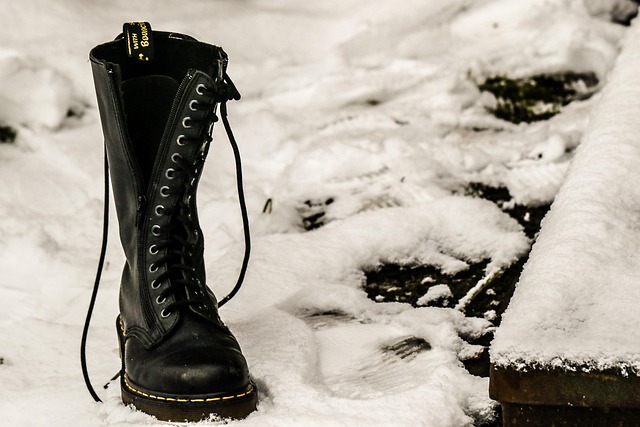A Guide to Choosing Waterproof and Insulated Winter Boots
Winter boot trends in 2025 highlight warmth, functionality, and durable design. From waterproof hiking styles to sleek leather looks, these boots combine protection and fashion, helping users stay comfortable and confident during cold-weather conditions.

When temperatures drop and snow begins to fall, having the right footwear becomes essential for maintaining comfort and safety during outdoor activities. Winter boots serve as your primary defense against harsh weather conditions, providing crucial protection that regular shoes simply cannot offer. The market offers numerous options with varying technologies and price points, making the selection process both important and potentially overwhelming.
Understanding the Key Features That Help Keep Feet Warm and Dry
Effective winter boots combine several technologies to create a barrier against cold and moisture. Waterproof membranes, such as Gore-Tex or proprietary alternatives, prevent water penetration while allowing moisture vapor to escape. This breathability prevents the buildup of condensation inside the boot, which can lead to cold, damp feet.
Insulation materials play an equally important role in temperature regulation. Synthetic insulation like Thinsulate or PrimaLoft maintains warmth even when wet, while natural down provides excellent warmth-to-weight ratios in dry conditions. The amount of insulation, measured in grams, typically ranges from 200g for mild conditions to 800g or more for extreme cold.
Tread patterns and outsole compounds affect traction on various surfaces. Deep lugs with multidirectional patterns provide grip on snow and ice, while specialized rubber compounds remain flexible in freezing temperatures. Some boots incorporate metal studs or carbide tips for enhanced traction on icy surfaces.
What to Consider When Selecting Boots for Cold and Wet Weather
Climate conditions in your area should guide your boot selection process. Regions with frequent freeze-thaw cycles require different features than areas with consistently dry, cold weather. Consider the typical temperature ranges, precipitation patterns, and terrain you’ll encounter most often.
Activity level and duration of outdoor exposure influence insulation needs. Someone who works outdoors for extended periods requires different protection than a person making quick trips between heated buildings. Higher activity levels generate more body heat, potentially requiring less insulation to prevent overheating.
Boot height affects both protection and mobility. Taller boots provide better snow protection but may restrict ankle movement. Mid-height options offer a balance between protection and flexibility, while low-cut styles prioritize mobility over coverage.
How Insulation Fit and Materials Influence Comfort in Winter Conditions
Proper fit becomes more complex with winter boots due to the need for appropriate sock thickness and potential foot swelling in cold conditions. Boots should accommodate thick wool or synthetic socks without creating pressure points. A thumb’s width of space between your longest toe and the boot’s front allows for proper circulation and sock layers.
Insulation thickness affects internal boot volume, requiring careful sizing consideration. Boots with 400g or more insulation may require sizing up by half a size to maintain proper fit with appropriate socks. Too-tight boots compress insulation, reducing its effectiveness and restricting blood flow.
Material choices impact both performance and durability. Full-grain leather offers excellent durability and water resistance when properly treated, while synthetic materials often provide lighter weight and faster drying times. Combination constructions use leather in high-wear areas with synthetic panels for breathability.
| Boot Type | Price Range | Insulation Level | Best For |
|---|---|---|---|
| Basic Winter Boots | $50-$100 | 200-400g | Light snow, short exposure |
| Mid-Range Options | $100-$200 | 400-600g | Regular winter activities |
| Premium Models | $200-$400 | 600-800g+ | Extreme conditions, professional use |
| Specialty Boots | $300-$600 | Variable | Specific activities (mountaineering, ice fishing) |
Prices, rates, or cost estimates mentioned in this article are based on the latest available information but may change over time. Independent research is advised before making financial decisions.
Additional Features That Enhance Winter Boot Performance
Removable liners allow for easier drying and cleaning while extending boot life. These liners can often be washed separately and may include additional insulation or moisture-wicking properties. Some systems include multiple liner options for different temperature ranges.
Closure systems affect both convenience and weather protection. Traditional laces provide customizable fit but may freeze or become difficult to manage with gloves. Speed lacing systems, zippers, and BOA dials offer alternatives that balance security with ease of use in cold conditions.
Reflective materials and bright colors improve visibility during shorter winter days. While not always a primary consideration, these features can enhance safety during outdoor activities or work environments with low-light conditions.
Maintenance and Care for Long-Term Performance
Proper care extends boot life and maintains performance characteristics. Regular cleaning removes salt and debris that can damage materials, while appropriate conditioning keeps leather supple and water-resistant. Waterproofing treatments should be reapplied periodically based on use frequency and conditions.
Drying techniques affect both hygiene and material integrity. Removing boots promptly after use and allowing proper air circulation prevents odor development and material breakdown. Avoid direct heat sources that can crack leather or damage synthetic materials.
Storage considerations include maintaining boot shape with appropriate supports and ensuring complete dryness before long-term storage. Cedar shoe trees or newspaper can help maintain shape while absorbing residual moisture.
Selecting appropriate winter boots requires balancing multiple factors including climate, activity level, fit requirements, and budget considerations. Understanding how different technologies and materials perform in various conditions helps ensure your investment provides the protection and comfort needed for winter activities. Taking time to properly evaluate these factors and maintain your boots will result in reliable performance throughout multiple winter seasons.




